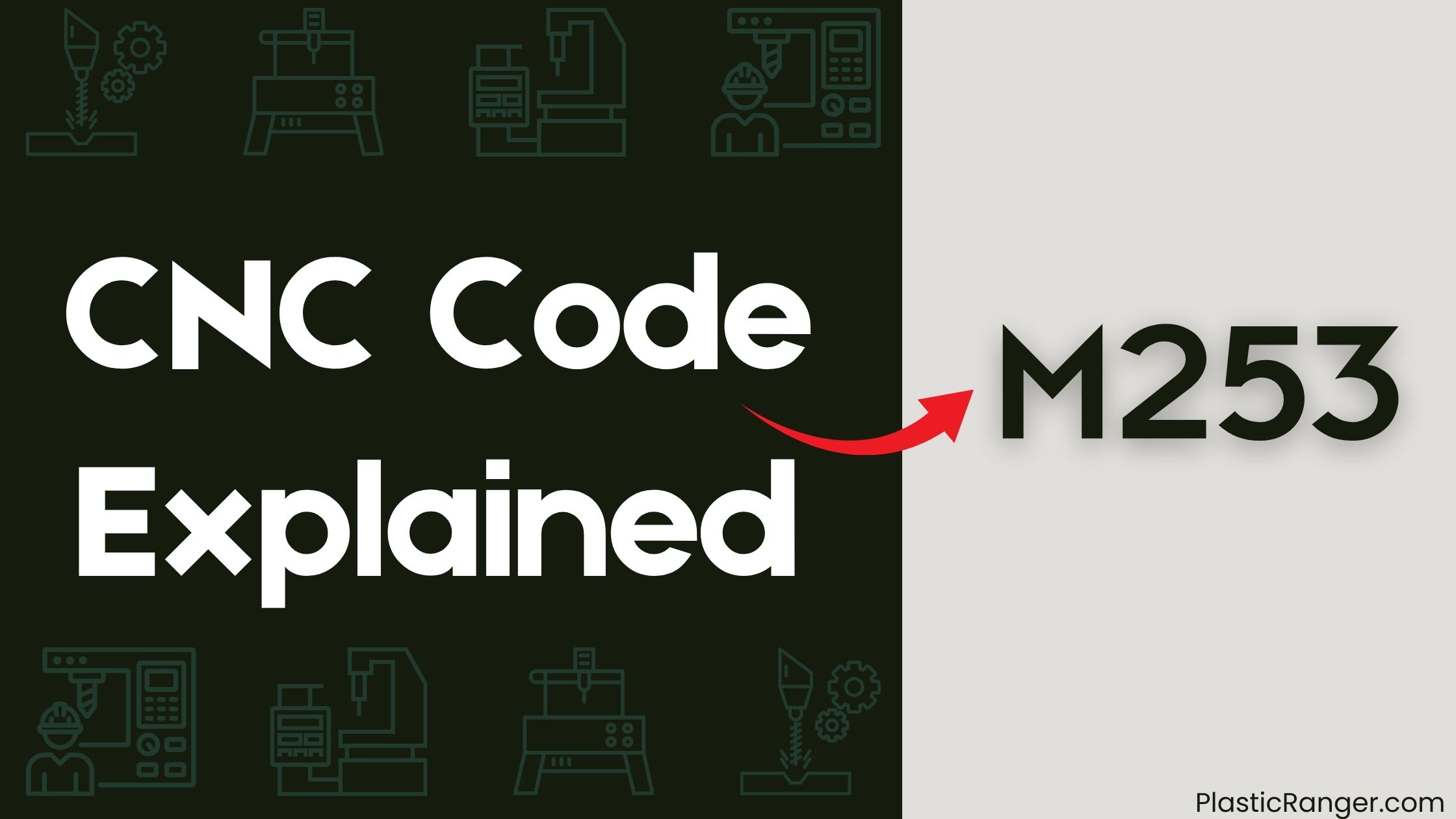Welcome to our simple guide on the M253 CNC code. Whether you are new to CNC programming or an experienced machinist, understanding the M253 code is essential.
This guide will explain everything you need to know about this unit mode command—what it is, when to use it, and why it matters.
(Step-by-step.)

Key Takeaways
- M253 is a custom mode written by Makino to meet unique machining needs, providing adaptability in CNC machining operations.
- This code optimizes machining processes, reducing cycle times and improving overall efficiency by executing complex machining sequences.
- M253 is often used with other M-Codes, such as M250, M251, and M252, to achieve specific machining results.
- The code requires consulting the machine manual and potentially Makino’s technical support team for proper implementation.
- M253 has been successfully integrated into machining processes, achieving improved performance and efficiency, with reported cycle time reductions of up to 68 seconds.
Understanding M-Codes in CNC Operations
In the world of CNC operations, M-Codes play a pivotal role in controlling various machine functions, and understanding them is essential for optimizing machine performance.
You’ll find that M-Codes, such as M00, M03, M05, M30, and M08, are commonly used in programming CNC lathes, mills, and routers to control spindle rotation, coolant flow, and tool changes. These codes vary by machine and manufacturer, so it’s imperative to consult machine-specific manuals for accurate codes.
For instance, the Makino S33 VMC/PRO 3 machine model uses M-Codes 250, 251, and 253, each with specific functions.
Understanding M-Codes is indispensable for metalworking professionals to optimize machine performance, improve cycle time, and guarantee accurate production.
You can use codes like M319, a pre-orientation code, to save cycle time by executing coolant and spindle orientation in the same block.
M253 CNC Code Functionality and Benefits
You can access tailored functionality and improved performance in specific machining applications by utilizing the M253 CNC code, a custom mode that can be written by Makino to meet your unique needs.
This custom mode flexibility allows you to define your own machining sequences, providing adaptability in CNC machining operations. By using M253, you can optimize your machining processes, reducing cycle times and improving overall efficiency.
This machining process optimization leads to increased productivity and cost savings. In addition, M253 can be used in conjunction with other M-codes to create complex machining sequences and optimize performance, resulting in code integration benefits.
The custom nature of M253 enables you to address specific machining challenges and develop unique solutions that meet your specific needs and requirements. Moreover, with M253, you can overcome machining obstacles and achieve improved results in your operations.
Makino Machine-Specific M-Codes Explained
Makino machine-specific M-Codes, like M253, offer tailored functionality for optimizing machining operations.
As a user, you can tap into the full potential of your Makino machine by leveraging these proprietary codes. With a rich history of innovation, Makino has developed a range of machine-specific M-Codes that enable customization and proprietary programming.
When working with M253, you’ll need to consult the machine manual and potentially Makino’s technical support team to guarantee proper implementation.
This code is often used in conjunction with other M-Codes, such as M250, M251, and M252, to achieve specific machining results.
Some key benefits of Makino machine-specific M-Codes include:
- Customized machining cycles: Create tailored cycles for specific applications, reducing cycle times and improving part quality.
- Optimized tool paths: Use M253 to generate efficient tool paths, minimizing wear and tear on your machine.
- Improved machine performance: By leveraging M253, you can release the full potential of your Makino machine, leading to increased productivity and accuracy.
Common M-Codes for Machine Control and Tool Management
Common M-Codes for Machine Control and Tool Management streamline your CNC operations by providing a standardized way to control machine functions and manage tools.
You can optimize your machine function with M-Codes such as M20, M21, M22, M23, and M24, which are used for machine control. For instance, M20 verifies program integrity, while M21 returns to the home position.
For tool management, you can use M-Codes like M06, M09, and M30. M06 is specifically used for tool change, M09 for coolant off, and M30 for program end and reset to start.
In addition, M-Codes M07 and M08 are used for coolant control, with M07 turning mist coolant on and M08 turning flood coolant on, while M09 turns both off.
Practical Applications and User Experiences With M253
Several CNC operators have successfully integrated the M253 code into their machining processes, achieving improved performance and efficiency.
By customizing the code to their specific needs, you can tap tailored machine functionality and optimize your machining operations.
When used correctly, the M253 code can lead to significant improvements in cycle time and overall productivity.
For example:
- A Practical Machinist forum user reported a 68-second cycle time reduction after implementing the M253 code with their Makino S33 VMC/PRO 3 machine.
- The code can be used in conjunction with other M-codes, such as M250 and M251, to further boost machine performance.
- Real-world scenarios have shown that the M253 code can be particularly beneficial in specific applications, such as high-volume production or complex part machining, allowing users to gain access to new levels of machine capability.
CNC Codes Similar to M253
| Code | Mode/Function |
|---|---|
| M250 | Milling head/B-axis unclamp |
| M251 | B-axis clamp |
| M252 | Milling spindle unclamp |
| M254 | Milling head/B-axis clamp |
| M236 | C-axis servo gain normal |
| M237 | C-axis servo gain low |
| M238 | C-axis servo gain middle |
| M239 | C-axis servo gain high |
Quick Navigation
